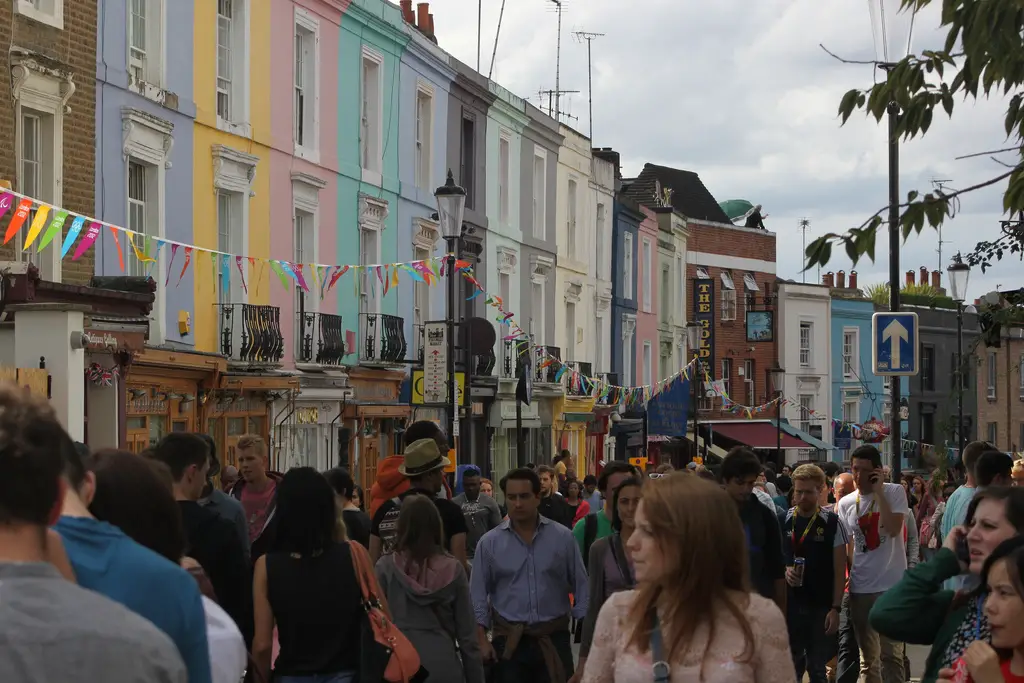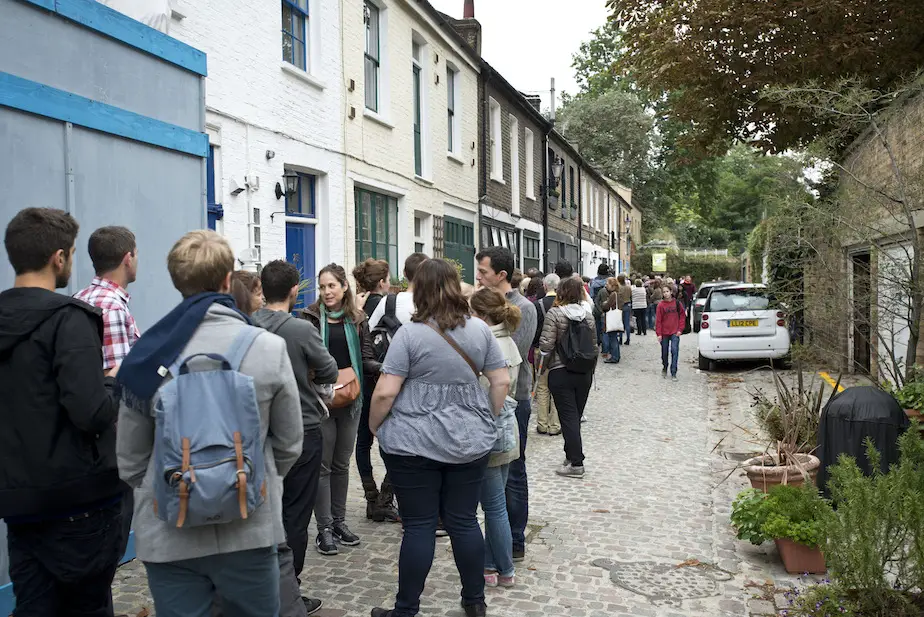In-between spaces, perceived as frontiers and borders, are the spaces that divide territories within our cities, neighbourhoods and towns. In our minds, they are understood as “non-places”, under-utilised spaces that are often associated with dirty, derelict and unsafe areas of the city.
Sometimes, they are obvious physical barriers under the shape of an underpass, a wall, a flyover or even a main road. But quite often they are also a fantastic opportunity for local communities, architects and other professionals to knit both sides together across those urban obstacles.
Government and private companies commonly own these spaces and use them mainly as municipal storages or dumpling sites, typically remaining closed and fenced. Finding innovative uses for these dead urban spaces is an opportunity to transform them into a neighbourhood amenity.

Abandoned space under the flyover in Newham, London.
In Caracas’ city centre, there is a fantastic and almost spontaneous second hand book market under the Avenida of Fuerzas Armadas Bridge (pictured at the top of this post), where locals and passers-by stop by to find a new literary acquisition. Traditional board games such as chess and ludo are also played under the flyover, where retired people socialise with their neighbours.
In London, plenty of activities are happening underneath rail stations, tunnels and flyovers. One example of that is the new House of Vans Park, the first indoor skate park located underneath the two tunnels of Waterloo Station in London. This space used to be occupied by the Old Vic Theatre and has now been given over to a dedicated skate park offering concrete bowls and mini ramps as well as art galleries, labs, exhibitions, cinema, and a canteen, transforming the space into an entertainment hub that is completely free and open to everybody.
This park is the only permanent indoor skate park in London and has brought some variety to the city’s skating community after the lengthy battle over the legendary Southbank skate park – one of the oldest continuously-used skate parks in the world that faced plans of relocation and closure in 2013 (thanks to support from locals, tourists, institutions, and organisations, the Southbank skate park remains safe).
Three additional tunnels beneath Waterloo station are being used as the Vaults: a community space transformed into a fantastic art gallery, hosting events, conferences and gigs, giving artists and creative individuals the opportunity to develop their skills and show their talent through artistic interventions.
The involvement of local people, community groups and institutions in the redevelopment and transformation of these in-between spaces is crucial. This is the case of the new Cape Town Mill St Skate Park, a winning proposal organised by Building Trust International who called on professional and student architects to submit proposals to turn forgotten spaces around the globe into playscapes.
The winning proposal was in Cape Town, just under the Jutland Avenue Bridge; the first skate park located in the city centre that has transformed an under-used and redundant space into a community-led Skate Park. Not only has this space been successful but it has broken down the barriers of race, sex and age. Hopefully, this park is just a precedent for the use of many vacant spaces below the city bridges and off-ramps of Cape Town.

BaySixty6, London.
There have been several projects that have been successful around the world such as Burnside Skate Park in Oregon (US), Underpass Park in Toronto, BaySixty6 in London (pictured above), I-5 Colonnade Mountain Bike Park in Seattle, and so on, all of them escaping from traditional park designs.
Skateboarding has always been associated with a strong sense of independent and creative thinking, imagination, passion, persistence and innovation. Maybe this is why in-between spaces work so well with this practise. These parks illustrate how innovative thinking and design-centred development can transform derelict spaces for the benefit of a wider community.
Tere García Alcaraz is an architect and development practitioner from Barcelona, with research and working experience in Ecuador, Venezuela, Spain and the UK. She lives in London.
Top photo: Caracasshots Other photos: Tere García Alcaraz


